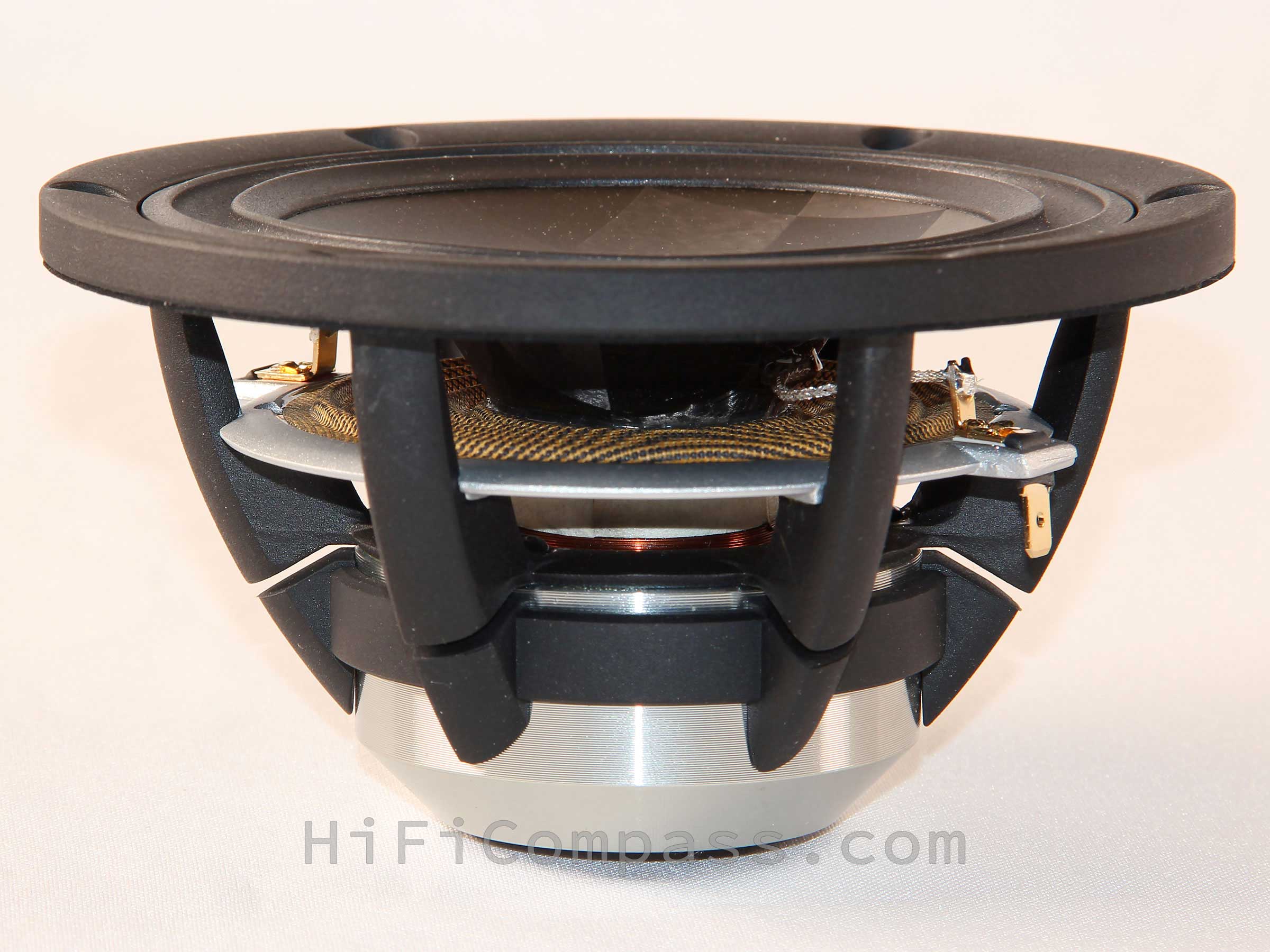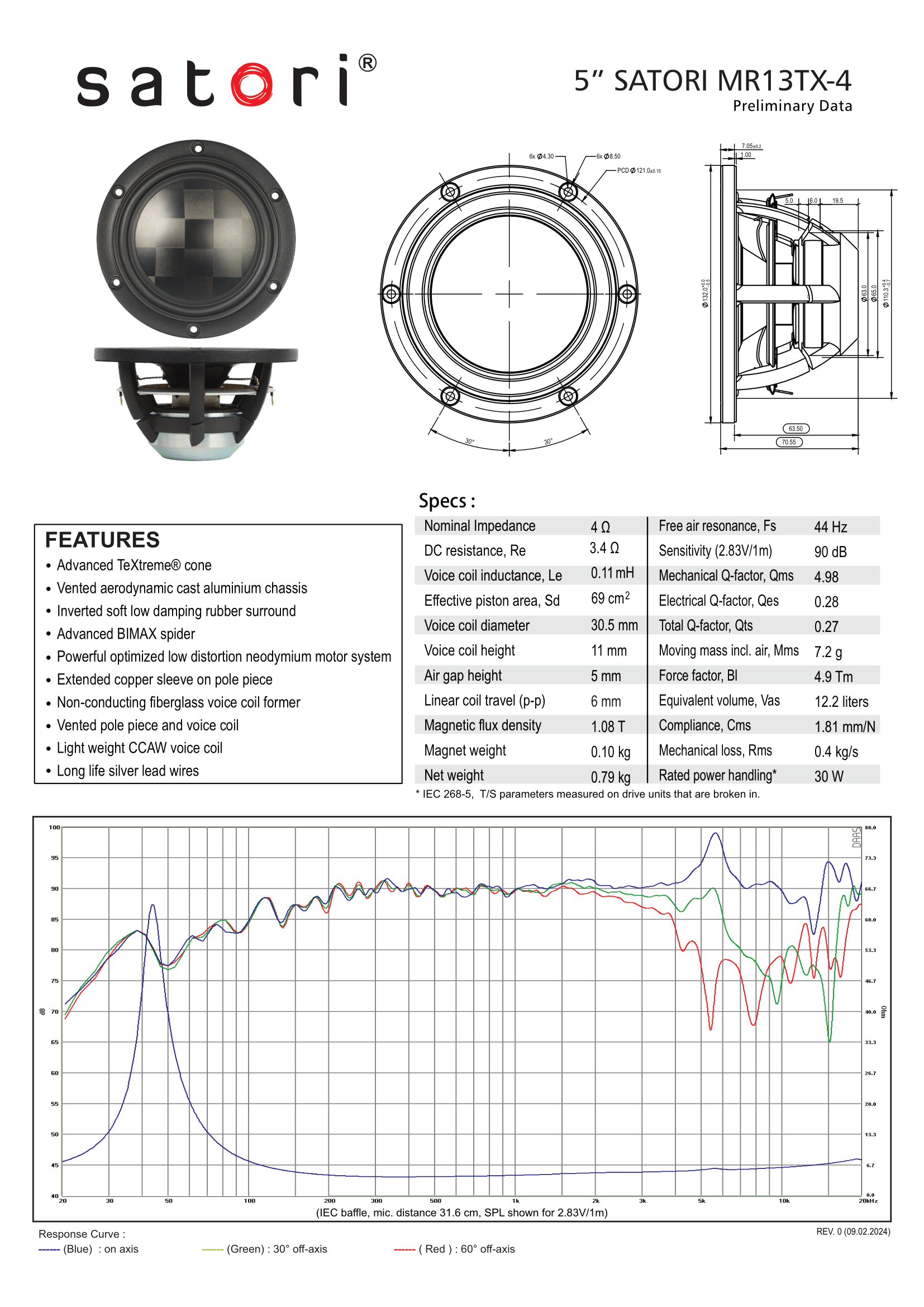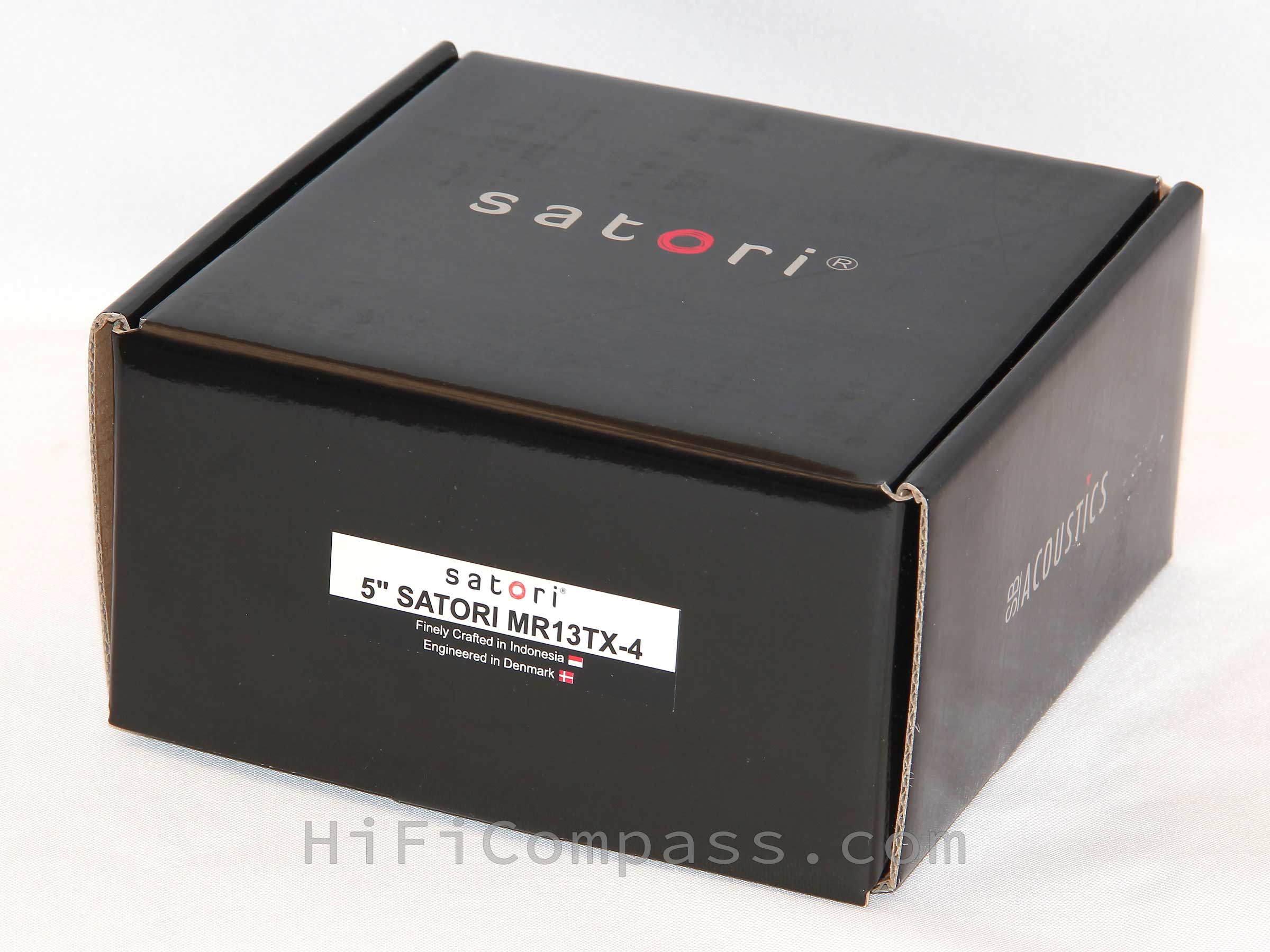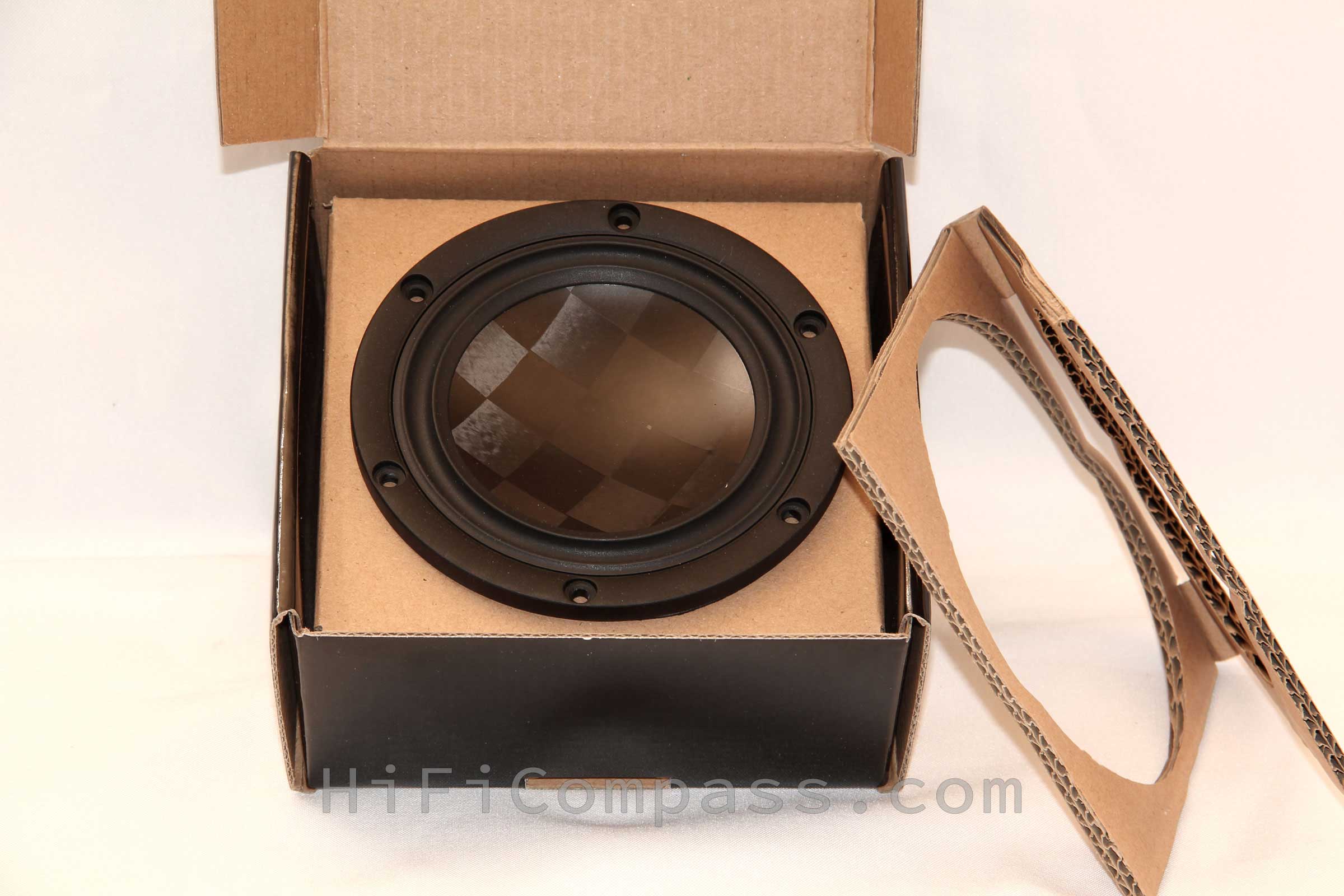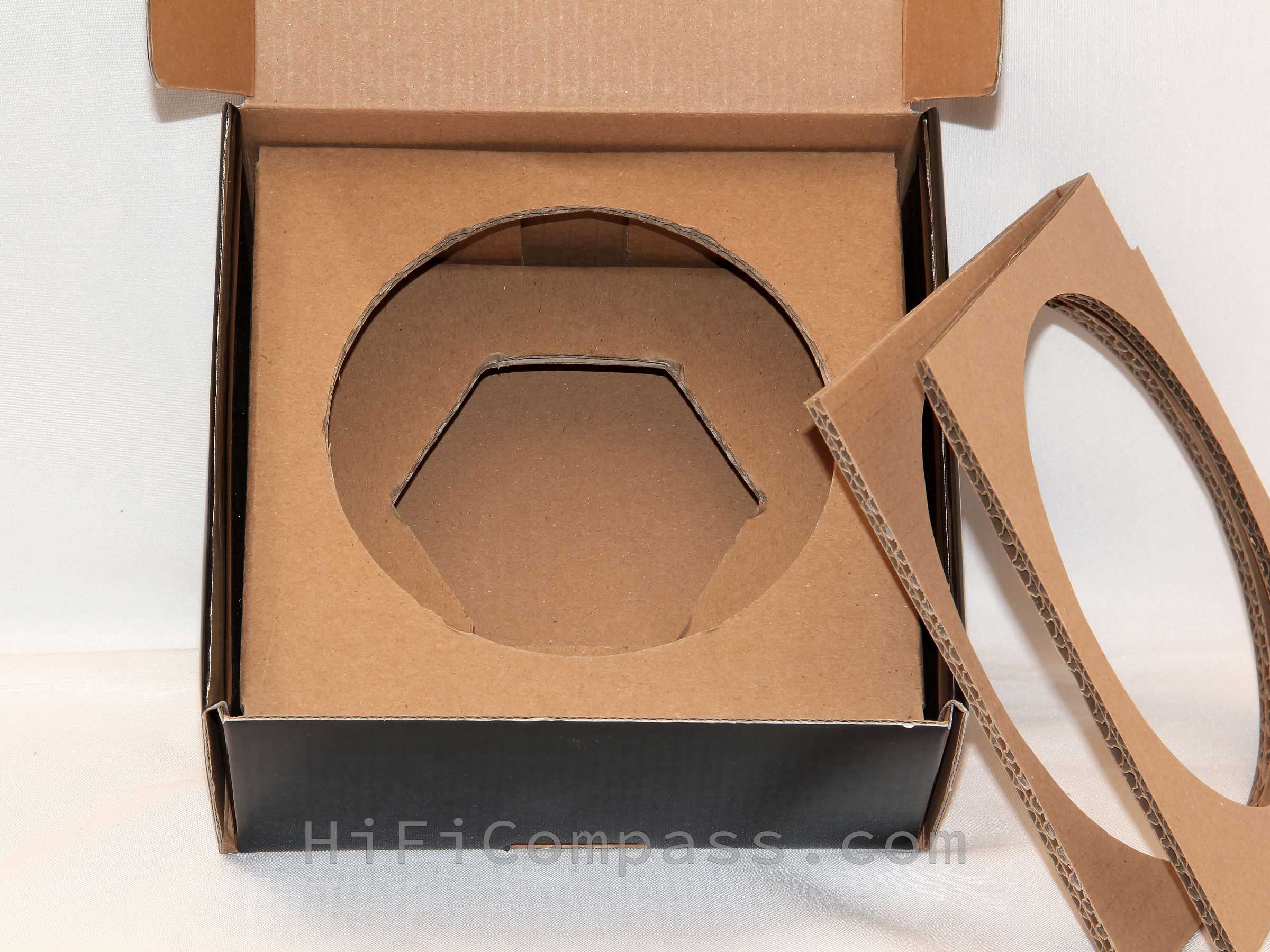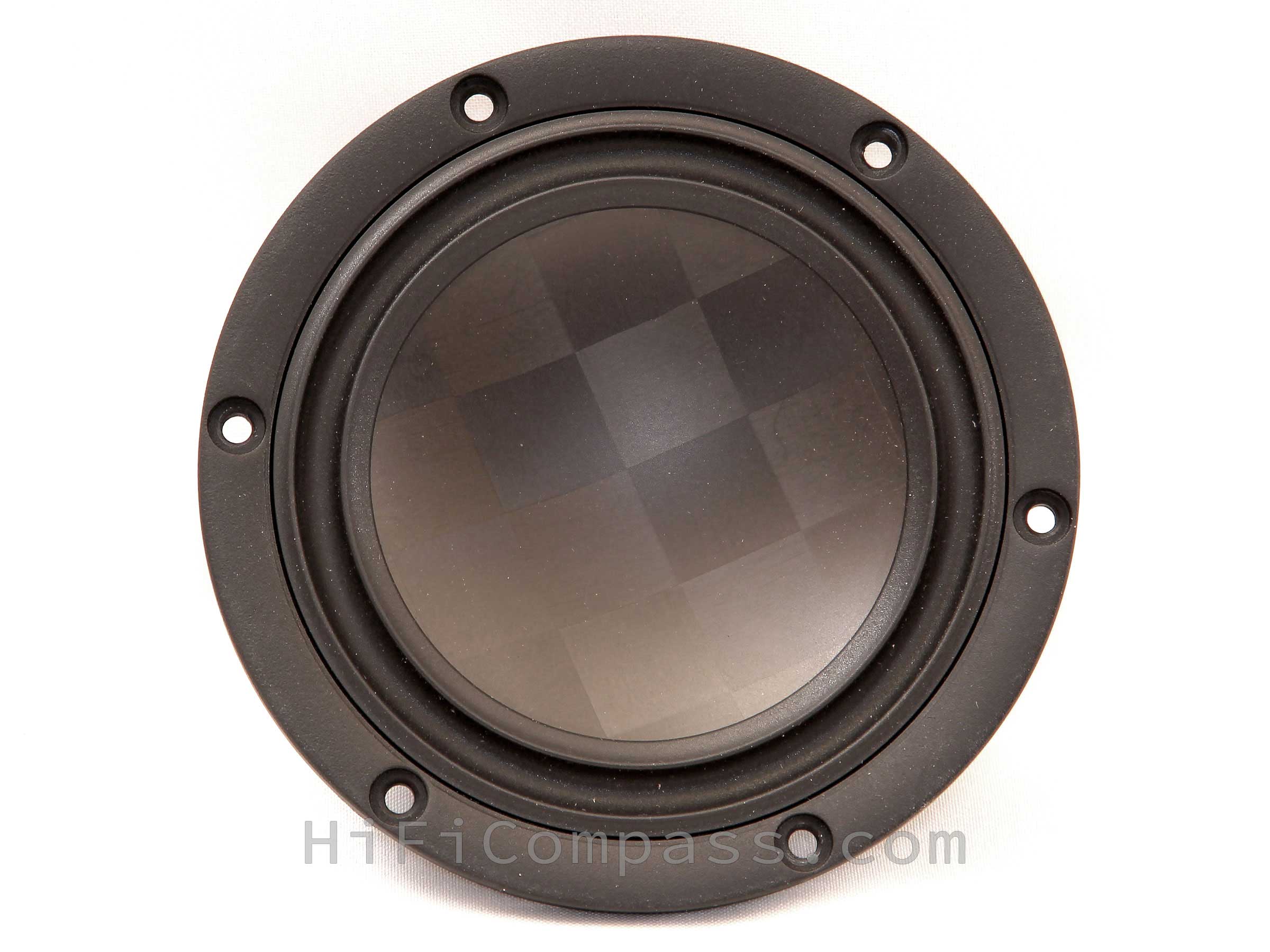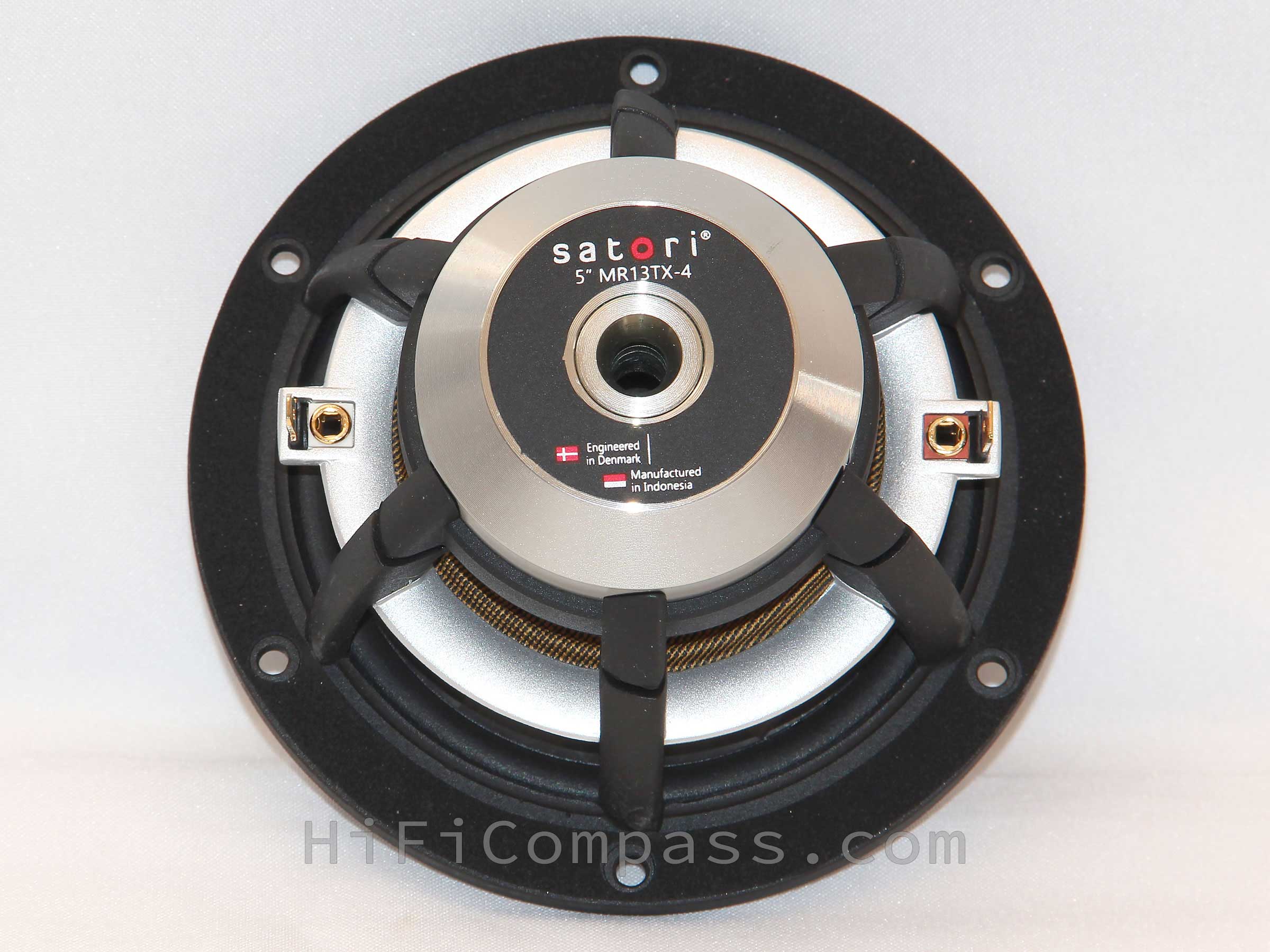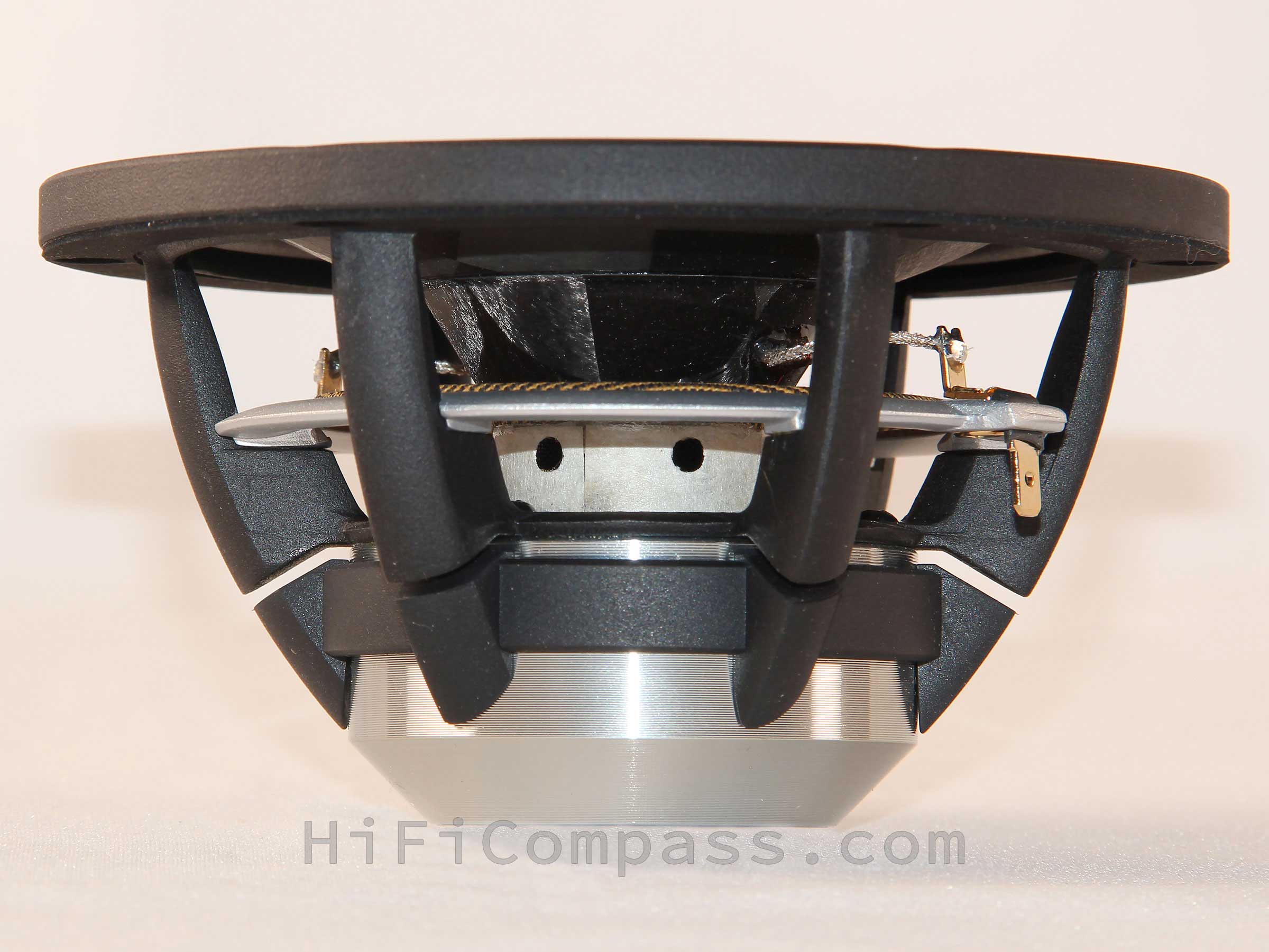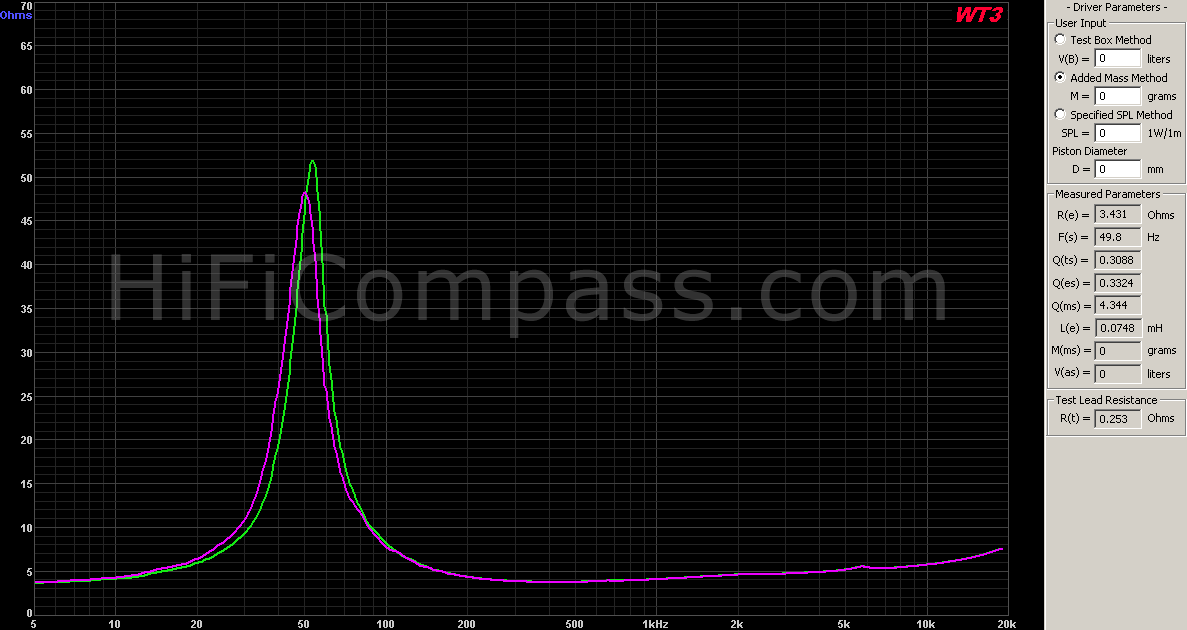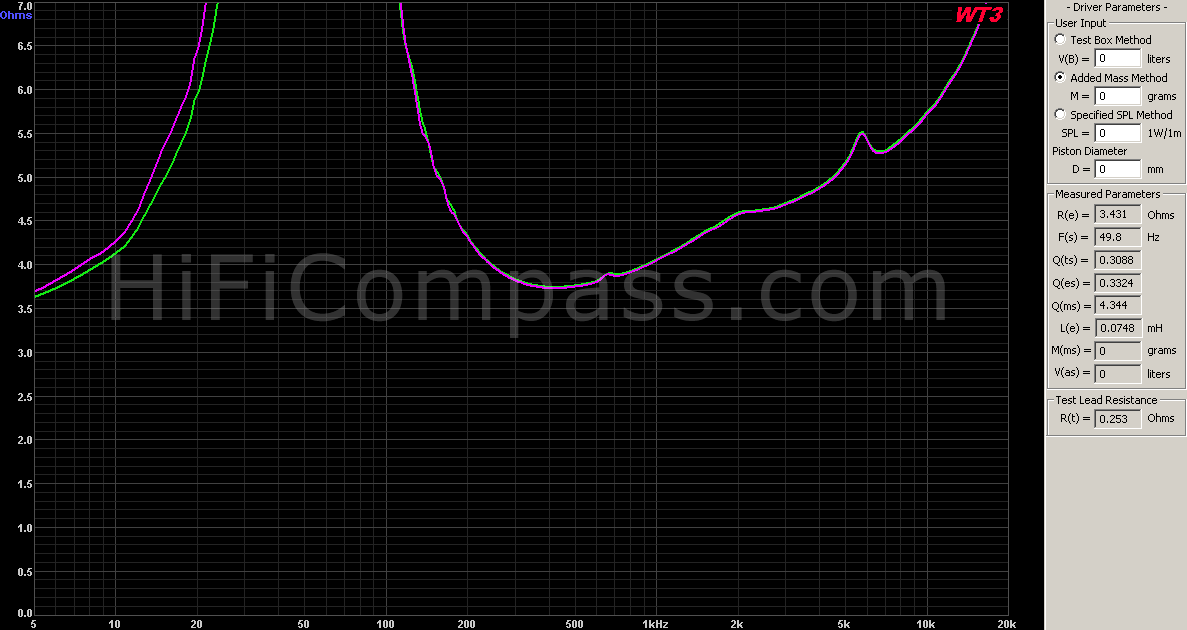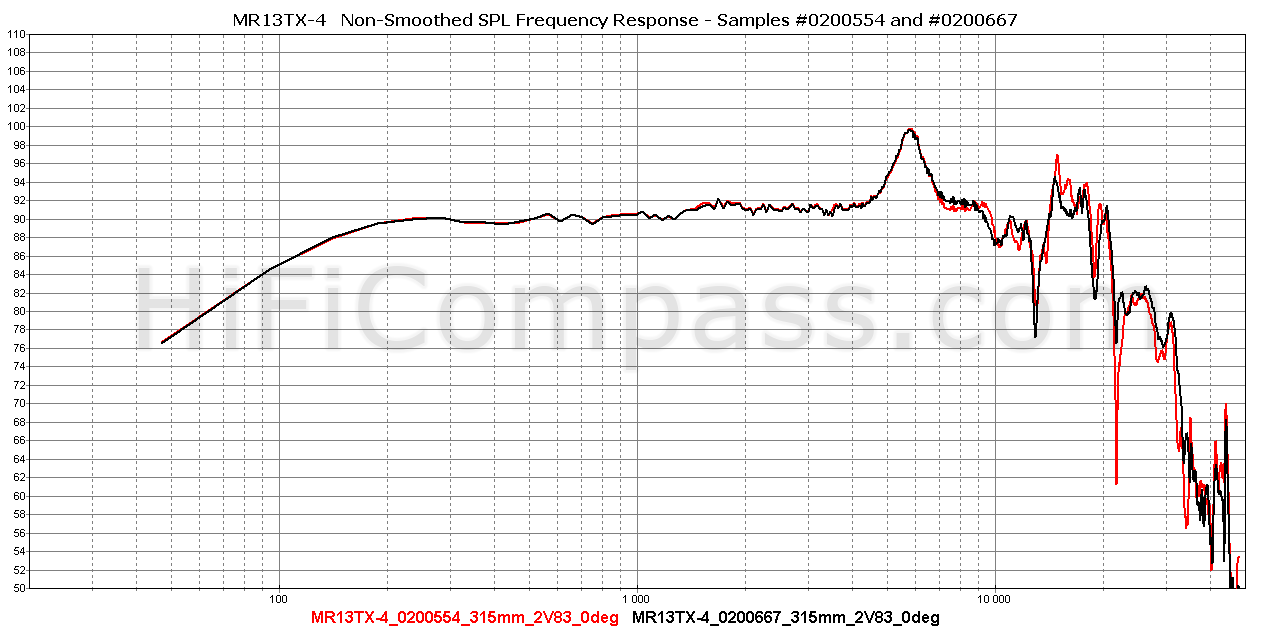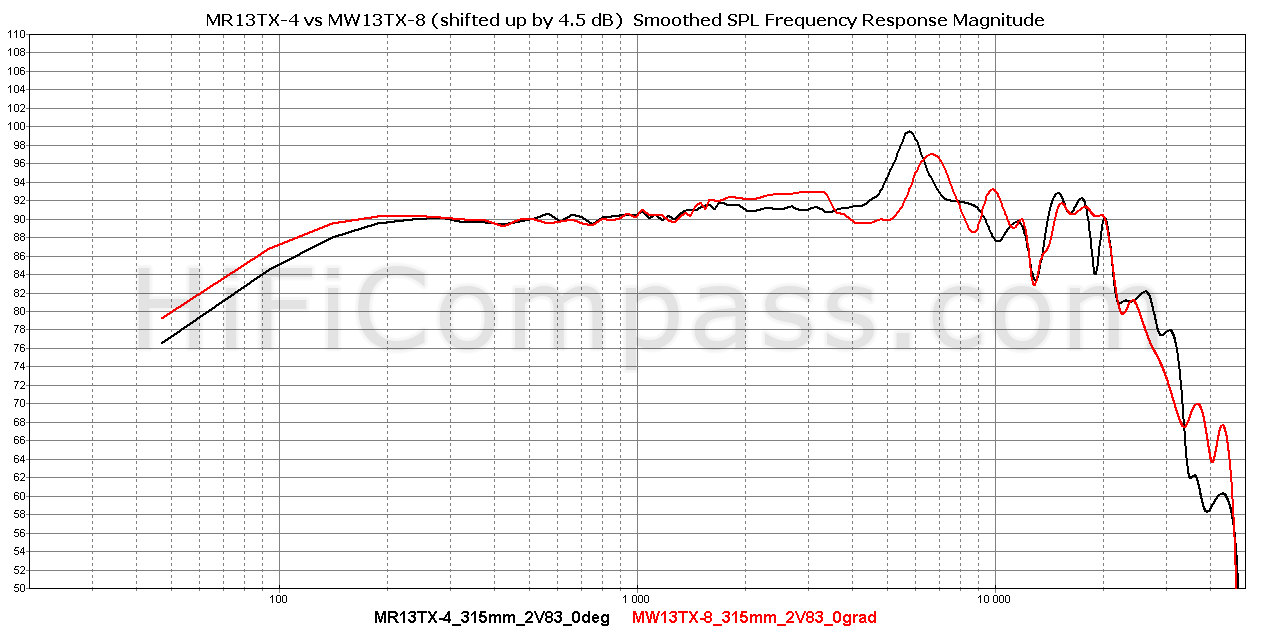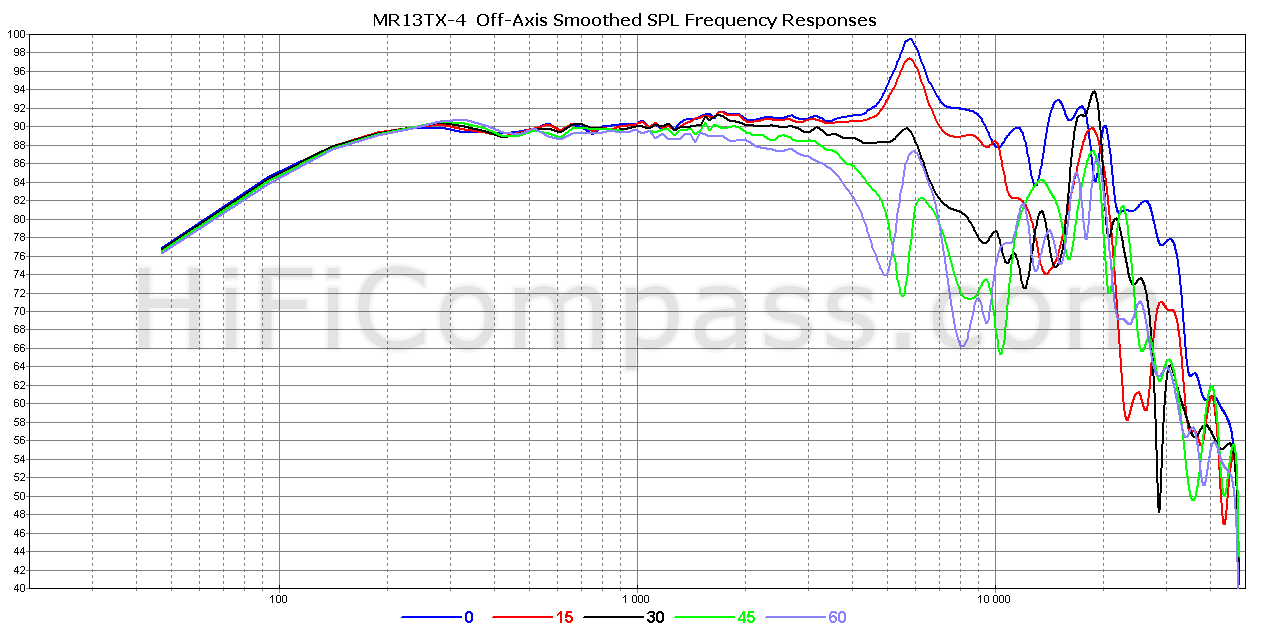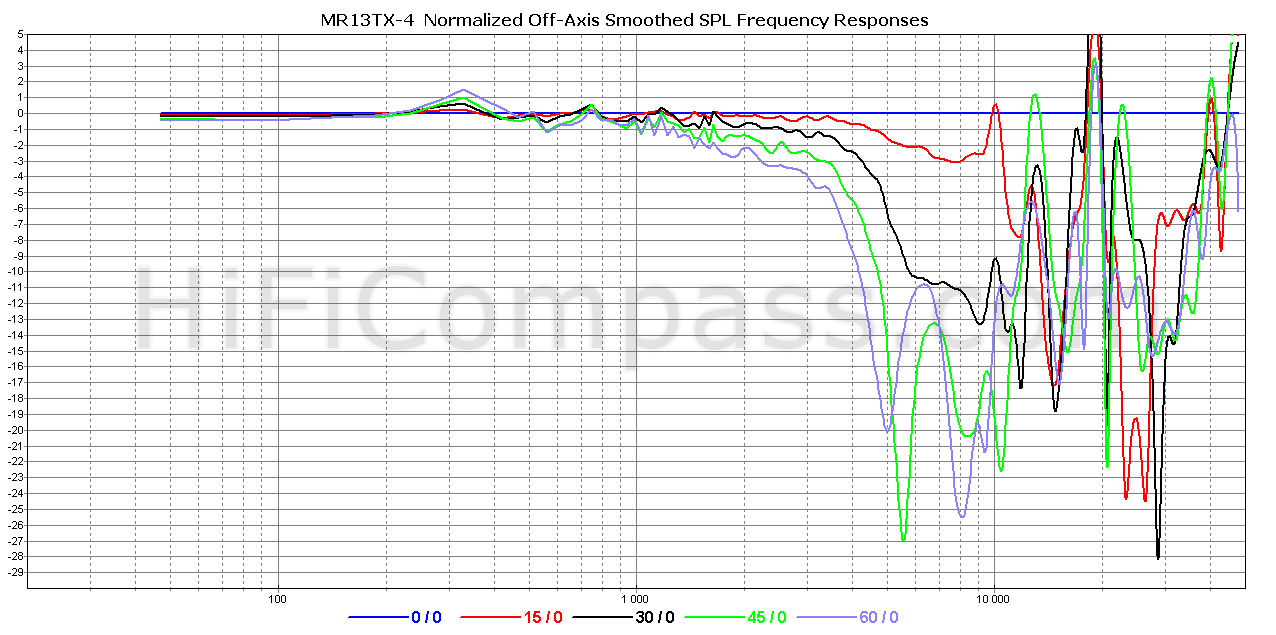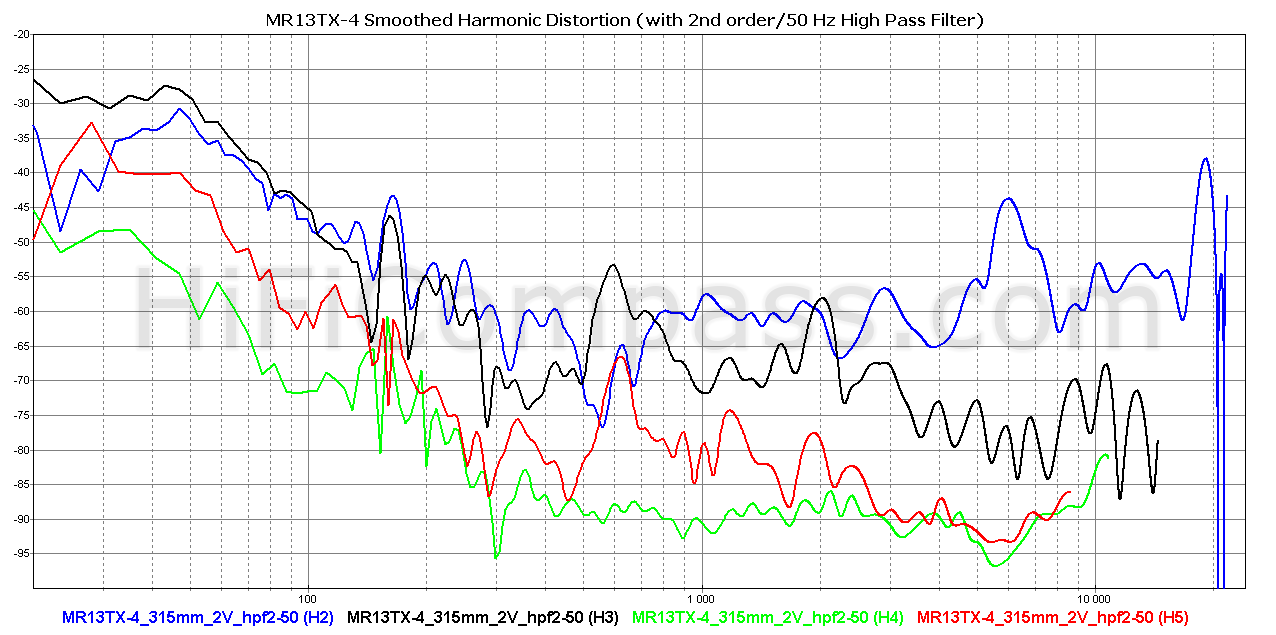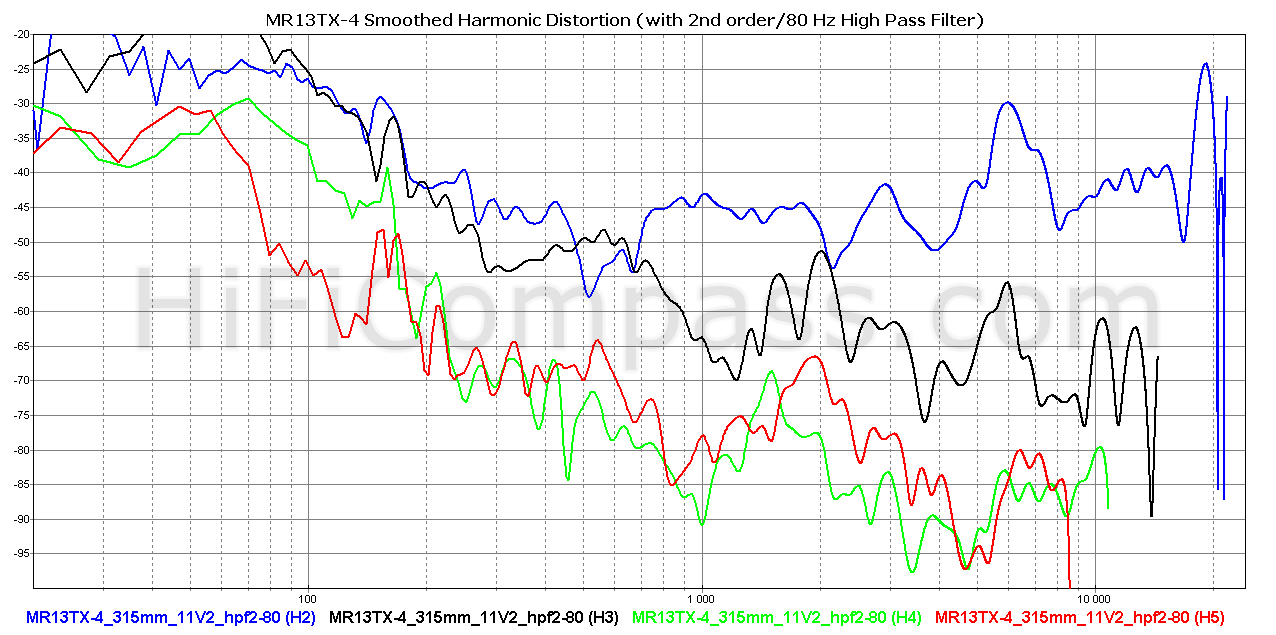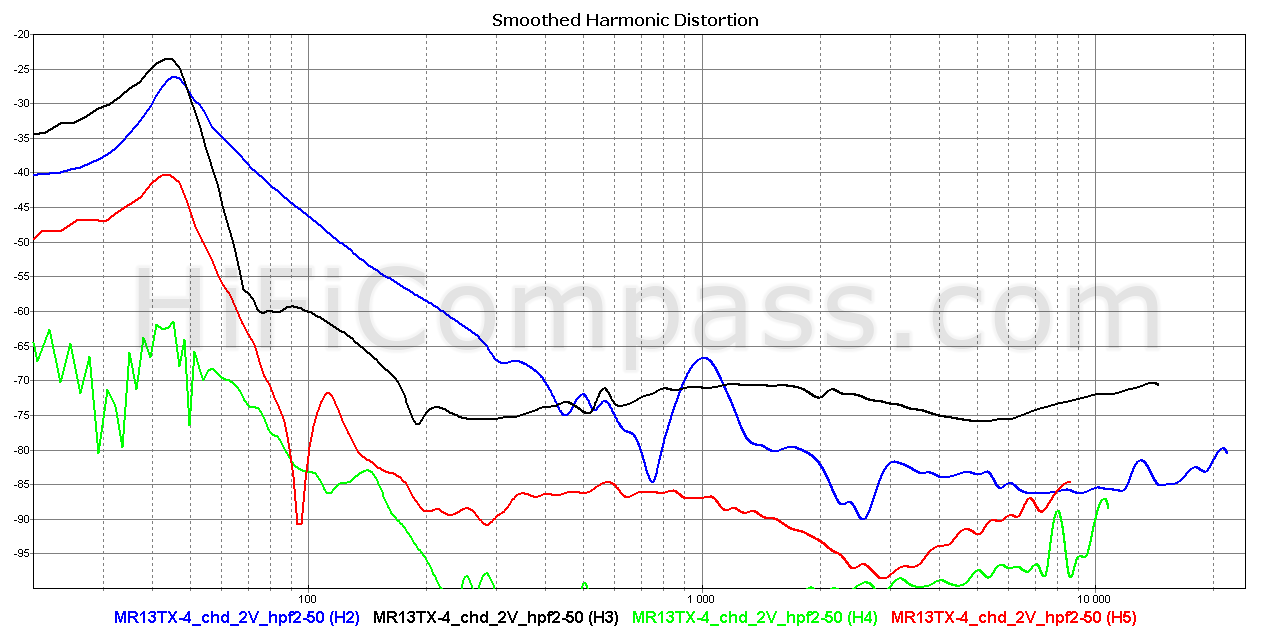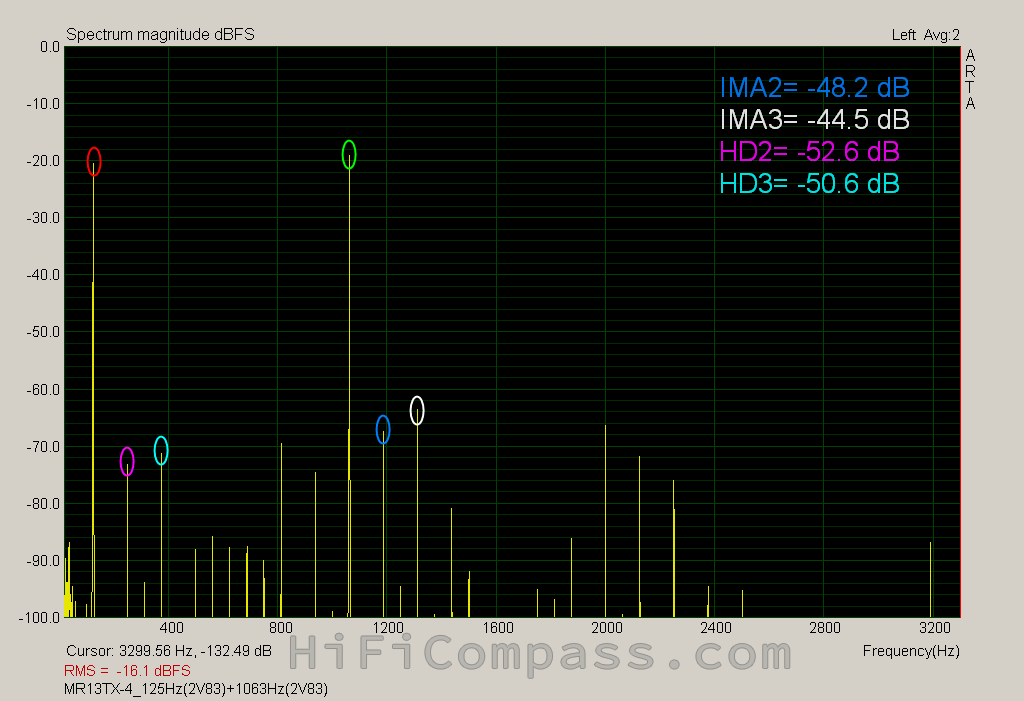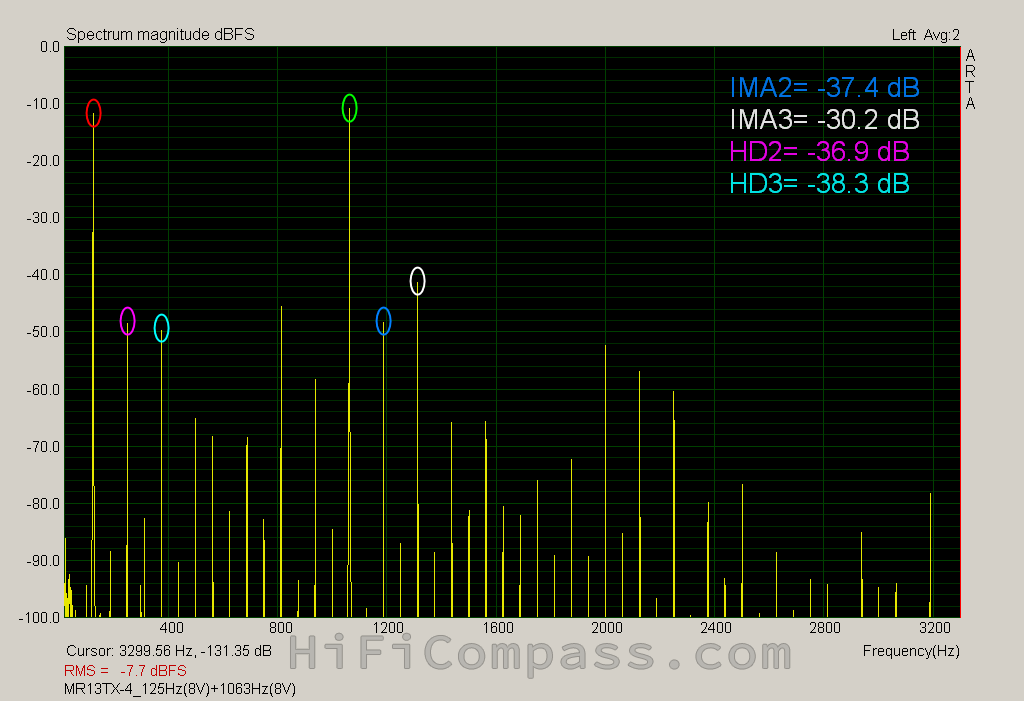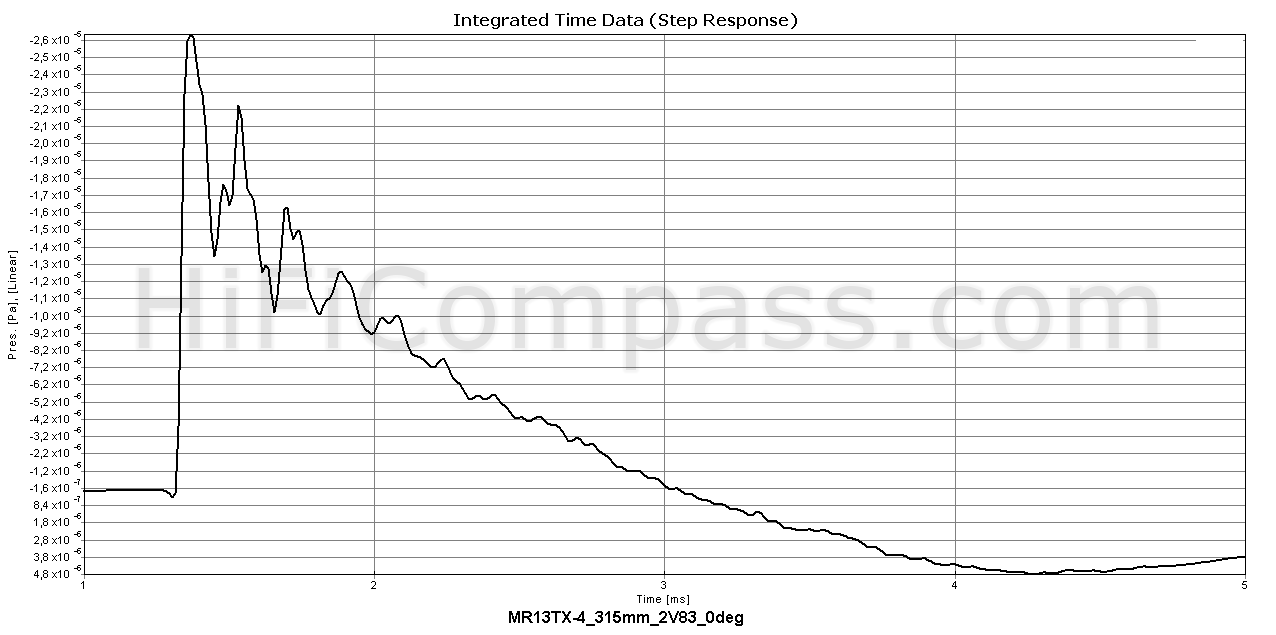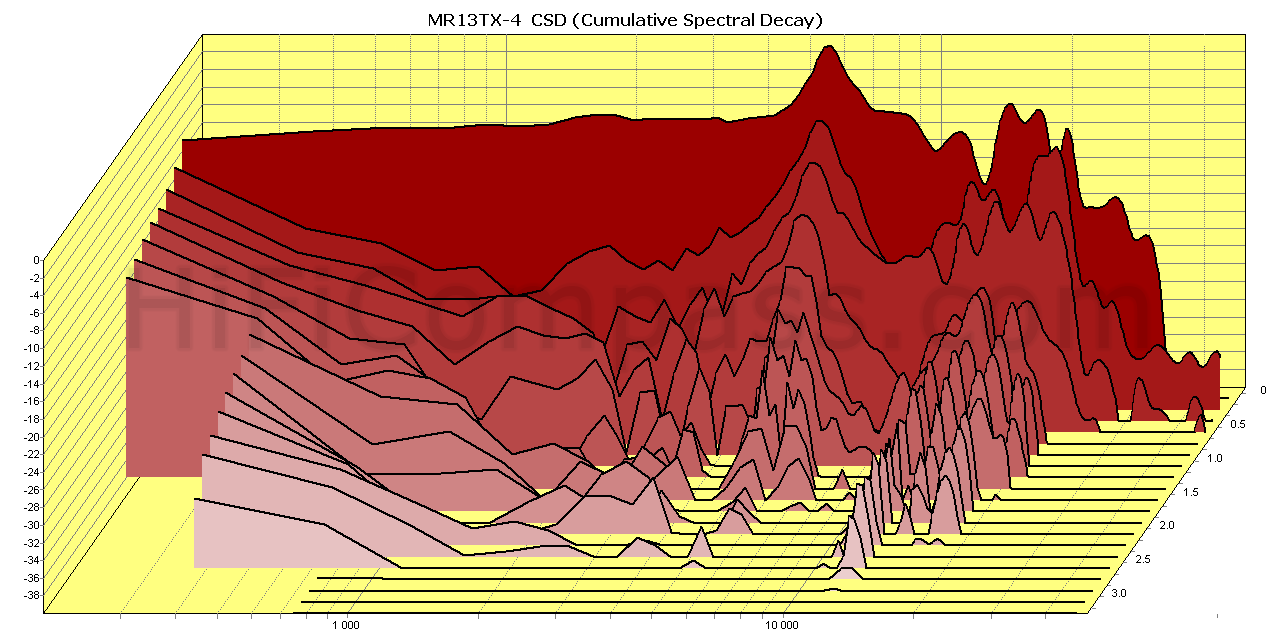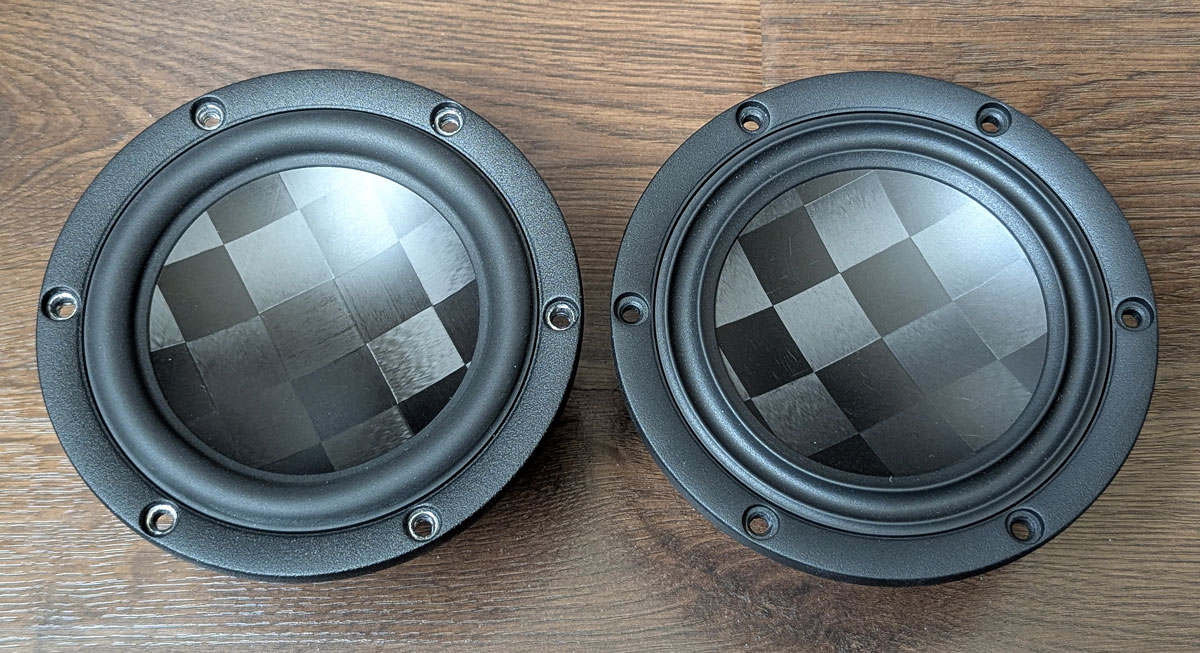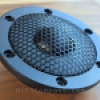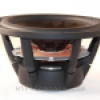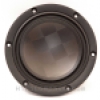HiFiCompass
Satori MR13TX-4 5" TeXtreme midrange review
In April 2023, Indonesian company Sinar Baja Electric updated its top-end Satori brand with two 5“ and 6.5” midrange drivers with TPCD diaphragms (TeXtreme) - the Satori MR13TX-4 and Satori MR16TX-8, respectively. At that time, the company already had five Satori models with TPCD diaphragms:
- 1.2" tweeter TW29TXN (4 and 8 Ohm) (review)
- 5" midwoofer MW13TX (4 and 8 Ohm)
- 6" midwoofer MW16TX (4 and 8 Ohm) (review)
- 7.5" midwoofer MW19TX (4 and 8 Ohm) (review)
- 9.5" woofer WO24TX (4 and 8 Ohm)
As you can see, to complete the line only “true” midrange speaker was missing, although many people have successfully used 5" Satori MW13TX and 6.5" MW16TX midwoofers as midrange drivers before, as their characteristics were perfectly suitable for this task. From personal experience, I will say that I never had any complaints about their performance in the midrange. Nevertheless, the company decided to take the matter to its logical conclusion and now there is an opportunity to build loudspeakers, from bottom to top, on speakers with TeXtreme diaphragms highly specialized for their frequency range.
TeXtreme is a new word that came into the "high-end world" in the spring of 2019 and has been exciting audiophiles minds ever since. It all started with the presentation by the Swedish company Oxeon of the newest type of membrane for speakers - TPCD (Thin Ply Carbon Diaphragm) based on TeXtreme, as evidenced by the publication in the AudioXpress magazine. This was followed by the presentation at the Munich HighEnd-2019 by the Satori brand of new speakers using TeXtreme membranes - the Satori TW29TXN tweeter and Satori MW16TX midwoofer, and a demonstration of based on them loudspeakers developed by Danesian Audio.
Oxeon was founded in 2003 and introduced the TeXtreme to the world in 2004. So the material is by no means that new. Since then, it has been widely used as a heavy-duty and lightweight composite material in aviation, sports and industry. It is used to manufacture body parts for racing cars, aircraft seats, protective helmets for athletes, bicycle frames, golf clubs, skis and many more. However, it came in audio only in 2019 with the invention of TPCD membranes.
TeXtreme is a trademark of the company that means three concepts at the same time:
- The technology of converting a conventional multifilament (carbon, aramid, etc.), which is a thread of thousands of microfibers with a diameter of several microns, into a flat tape, where these fibers are strictly oriented parallel to each other (spread tow)
- The technology of weaving fabrics from wide flat tapes (thin ply)
- The fabric itself from these flat tapes
So, the term TeXtreme can mean both the technology of fabrication itself and the fabric itself. In the context of interest to all of us we will mean just the fabric and just from the spreaded carbon fiber.
The main advantages of TeXtreme over conventional carbon fabric are the strictly parallel arrangement of the fibers and the absence of their mutual twisting when they are distributed into flat tapes. This reduces the amount of voids in the yarn. Further, the wide flat tape weaving technology provides a much denser filling of a fabric surface with fibers, significantly reducing the amount of voids that must then be sealed with epoxy. Everything contributes to a higher specific content of carbon fibers in the fabric, greater strength and less weight.
Today we're taking an in-depth look at the Satori MR13TX-4 5” midrange as part of a series of reviews initiated by Sinar Baja Electric.
I would like to thank Mark Thomsen (Marketing and International Sales Manager at Sinard Baja Electric) and Frank Nielsen (CEO & Owner at Danesian Audio ApS) for kindly providing me with samples of Satori MR13TX-4 speakers for testing and helping me solve logistical problems.
Here you can learn about the history of the SB Acoustics and Satori brands, as well as one of the world's largest speaker drivers manufacturer - Sinar Baja Electric (www.sinarbajaelectric.com).
The whole set of parameters, as well as all design features allow to refer MR13TX-4 to the top class speakers.
The datasheet does not contain any outstanding parameters, but I would like to note the low inductance of the voice coil - only 0.11 mH, high mechanical quality factor Qm=4.98 and low mechanical losses - Rms=0.4 kg/s.
The MR13TX-4 comes in a sturdy package made of glossy corrugated cardboard. Inside, the speaker is protected by cardboard inserts with shaped cutouts.
Visually, the MR13TX-4 midrange is absolutely identical to the MW13TX-8 midwoofer, except for two things. First, the MW13TX-8 has a 4mm longer voice coil, so it protrudes further from the magnetic gap. Second, the midrange has an inverted, i.e. concave surround.
The production quality is exemplary, there is nothing to complain about. Perfectly fitted parts, complete absence of any cosmetic defects, no burrs, distortions, chips and traces of glue. The label is perfectly aligned.
The acoustically very transparent basket is made of aluminum alloy and coated with black micro-textured powder coating. The flange thickness is 7 mm, the spokes are very strong. The magnetic system is equipped with a rubber ring with shaped elements that visually continue the spokes of the basket. It has no serious functionality, but it nicely complements the design of the basket. A foam gasket is glued to the back of the flange.
All elements of the magnetic system are not made by simple casting or stamping, but with subsequent turning, as evidenced by the cutter marks on the outer surfaces. This is one of the conditions for narrowing manufacturing tolerances and improving the consistancy of parameters, as well as an attribute of the highest class speakers. Inside the pole piece there is a vent ending in a 45 degree bevel at both ends. The ring neodymium magnet is not visible as it is covered with the decorative rubber ring.
The inverted half-roll surround is made of low loss rubber. The surround is very thin and soft and is clearly different in appearance and feel from the surround used in the “paper” version of the Satori MR13P-8. As far as I know, the MR16TX-8 and MR13TX-4 models are the first time that SB Acoustics and Satori designers have used an inverted surround. It seems that the new surround is the main “feature” of the midrange driver and, quite probably, should leave its imprint on its sonic signature.
The four wave spider is made of modern BIMAX material.
The voice coil former has six vent holes through which the copper sleeve on the pole piece is visible.
The flexible silver lead wires are quite stiff and attached to the voice coil former symmetrically at 180 degrees. This contributes to better balancing of the moving system.
The gold-plated terminals are pressed into the aluminum holder and sit very firmly in it. Thanks to the large amount of free space around them, connecting to them is very convenient and simple.
The TeXtreme diaphragm consists of two layers rotated 45 degrees relative to each other. Unlike classic carbon diaphragms, it is perfectly smooth with a pleasant matte silky sheen and, thanks to the microfiber structure, shimmers very beautifully at different angles of incidence of light. The sound response of the diaphragm when tapped or stroked with a finger is very similar to the response of a ping-pong ball, there is no better association.
An unusual element is visible between the voice coil former and the diaphragm - a cone adapter made of TeXtreme. It serves to transfer and distribute force from the voice coil to the diaphragm in the most optimal point to reduce the excitation of parasitic vibrations of the diaphragm.
Visual inspection revealed excellent modern construction, beautiful design and excellent workmanship.
Prior to all measurements, the MR13TX-4 was broken-in with a sinusoidal voltage of 5.5 Volts/44 Hz for 30 minutes. The diagrams below show the impedance frequency responses before (green) and after (purple) the break-in at different scales:
It is a rare case when the broken-ing had very little effect on the parameters. “Right out of the box” resonant frequency was Fs=51.81 Hz, and after broken-ing it was Fs=49.8 Hz. The measured values of Thiel/Small parameters differ slightly from the datasheet, but for a midrange speaker this is absolutely unimportant.
The impedance response from 500 Hz to 10 kHz rises very slowly and linearly (on a logarithmic scale), reflecting the very low voice coil inductance (0.11 mH), achieved thanks to the massive copper sleeve in the magnetic gap and helping to reduce nonlinear distortion. At high magnification, a resonant peak at 5.8 kHz due to the main diaphragm resonance becomes visible. The slight "gumboil" at 2 kHz can somehow be connected with the behavior of the surround, but as for what happens at 650 Hz, I have no exact explanation; perhaps something of this is connected with the resonance of the lead wires. In any case, for such a rigid diaphragm in the range up to at least 1 kHz everything should be perfectly smooth.
The impedance response tells us about the well balanced low loss moving system (high mechanical quality) and the excellent motor.
On-axis frequency response (at 315 mm)
Below are the axial unsmoothed SPL frequency responses for two MR13TX-4 samples measured in a test baffle at a distance of 315 mm to the microphone at 2.83 Volts:
The frequency response of both samples perfectly matches each other, even in the diaphragm's break-up mode. The measured sensitivity in the range of 200 Hz - 1.3 kHz was 90 dB, which completely matches the datasheet.
Up to 4.3 kHz the frequency response is very smooth with a slight gradual rise in the 1.3 - 4.3 kHz band. The total unevenness between 200Hz and 4.3kHz does not exceed ±1.25dB - excellent!
At 5.8 kHz there is a spike in the of about 9 dB, caused by the main diaphragm resonance. The surge is quite neat and symmetrical, so it can be easily corrected using one notch filter.
After the resonance peak, the diaphragm goes into not badly controlled break-up mode of operation, accompanied by a succession of insignificant spikes and dips of the frequency response, which are not worth focusing on.
The engineers coped with the problematic resonance of the surround perfectly - in the 700-2000 Hz range everything is very smooth, without the usual dips.
I was interested in comparing the frequency responses of the new midrange and the MW13TX-8 midwoofer to see if anything had changed for the better. The response of MW13TX-8 was shifted up by 4.5 dB:
As we can see, the curves match almost perfectly up to 1.5 kHz. The behaviors in the break-up mode are also very close. The main diaphragm resonance of the MW13TX-8 is even 1 kHz higher - very unexpected. In general, the MR13TX-4's response up to 4 kHz looks flatter and more favorable, if only the resonance peak were a bit higher in frequency...
Off-axis frequency responses (at 315 mm)
Below are graphs of off-axis frerquency responses - conventional and normalized, in which the axial response is taken as a reference, and the off-axis ones reflect only the difference with it:
The off-axis frequency responses are in perfect order. No unpleasant surprises were detected. In the range up to 5 kHz they decrease monotonically with increasing deflection angle and frequency.
Harmonic distortion (at 315 mm)
Above are the dependences of harmonic distortion at voltages of 2 and 11.2 Volts, which correspond to average sound pressure levels of 87 and 102 dB, respectively. The measurements were taken on axis at a distance of 315 mm to the microphone. To limit overloading of the speaker in terms of diaphragm displacement amplitude, a second-order digital high-pass filter with cutoff frequencies of 50 Hz at 2 Volts and 80 Hz at 11.2 Volts was used when measuring harmonic distortion. In these graphs, we analyze the frequency range only above 150 Hz.
At any sound pressure level, the exclusively euphonious second harmonic dominates in the entire range of operating frequencies, with the exception of a narrow interval between 500 and 700 Hz.
In the range of 500 - 700 Hz, a surge of the third and fifth harmonics is observed, possibly associated with some inexplicable resonance process in the moving system, which also manifested itself as a small "bump" at 650 Hz in the frequency response of the impedance.
With a decrease in frequency, an increase in all harmonics is observed, and the higher the sound pressure, the higher the frequencies from which this increase begins. In the usual for diaphragms of this caliber problematic interval of 700 Hz - 1.5 kHz, associated with its own resonance of the surround, everything is very well. The spike in distortion at 150Hz is an artifact of the measurements and has nothing to do with the speaker itself.
In general, I would rate the overall level of harmonic distortion as “very low”.
Voice coil current harmonic distortion
This type of measurement, despite its simplicity, is a good tool for assessing the linearity of the speaker motor. The diagrams above show the frequency responses of the 2nd, 3rd, 4th and 5th harmonics of the voice coil current at a voltage of 2 V (with the 2nd order high-pass filter with a cutoff frequency of 50 Hz).
Voice coil current nonlinearity is the direct nonlinearity of the mechanical force driving the speaker cone, since this force is related to the current by a simple relationship F=B*L*I, where B is the magnetic field strength, L is the length of the voice coil wire inside the magnetic gap and I is the current. The level of current distortion largely determines the minimum level of distortion that can be obtained from a speaker.
The second harmonic, very low over the entire range, behaves nervously in the 600 - 1400 Hz range. Nothing else unusual in the behavior of harmonics is observed. Everything is fine, everything is smooth, without any unexpected spikes. Nothing unusual in the behavior of harmonics is observed. Everything is good, everything is smooth, without unexpected spikes, except for the frequencies of 300 and 420 Hz. The usual growth of all components with a decrease in frequency at the bottom of the operating range. I would rate the overall level of current harmonics as "very low".
The intermodulation distortion measurement is one of way of to analyze the device non-linearity. It is not an alternative, but an additional method and allows you to identify the spectral components of the inharmonious structure, which are much more harmful for high-quality sound reproduction and to which our hearing is more sensitive.
For testing I chose the frequencies 125 and 1063 Hz with ratio (1:8.5). In this case the Doppler distortion is not yet dominant and the contribution of amplitude modulation can still be observed. The fractional coefficient eliminates the superposition of harmonic and intermodulation components on each other.
The intermodulation distortion spectra for these frequency pairs are shown below. However, in these plots products of the motor nonlinearity are mixed with products of inevitable frequency modulation due to the Doppler effect. How to determine who is who? We can analytically estimate the level of the first pair of the side Doppler components using the following formula [http://www.linkwitzlab.com/frontiers.htm#J]:
As(dB) = 20*log10(pi*A1*f2/c), where pi=3.14, A1- the modulating signal amplitude in meters, c=343 m/s, f2 - carrier frequency. In our case f2=1063 Hz.
The amplitudes of the modulating frequencies were obtained by calculation, based on the SPL and the diaphragm area. After that, the estimated maximum level of the 2nd order spectral components (IMA2Doppler) corresponding to Doppler distortions was calculated:
If the measured side spectral components are higher than these values, then the speaker nonlinearity and the amplitude modulation are predominant, if lower, then the Doppler distortion and the frequency modulation caused by them is dominant.
For a voltage of 2 Volts, the measured values of the second and third order intermodulation components were IMA2=-48.2 dB and IMA3=-44.5 dB, which is below the Doppler threshold of -42.31 dB, which means that frequency modulation dominates over amplitude modulation in the intermodulation distortion spectrum.
For a voltage of 2 Volts, the measured values were IMA2=-37.4 dB and IMA3=-30.2 dB, which is slightly above the Doppler threshold of -33.21 dB, meaning that in the intermodulation distortion spectrum, amplitude modulation dominates over frequency modulation.
Interestingly, the intermodulation distortion spectrum of the MR13TX-4 is dominated by third-order IMA3 components.
Overall, I would rate the level of intermodulation distortion at midrange frequencies as “very low”.
The step response rises very quickly and returns aperiodically to the resting state, but it is not ideal because it is spoiled by a oscillatory process from the main diaphragm resonance on the falling section. After filtering in a crossover it promises to look very beautiful![]() .
.
A waterfall shows the same effects as the step or frequency responses, in addition to exposing hidden resonances that are difficult to see on other types of measurements:
No new resonances are detected. We see a very clean, flawless waterfall up to 4 kHz and a series of rather quickly fading resonance “tails” at 5.8 kHz and 12.5 kHz after the diaphragm goes to the break-up mode. After 3 ms the waterfall is already completely quiet.
After the objective testing stage was over, as usual, I moved on to subjective evaluation of the sound. The speaker was listened to, being installed in the test baffle, in the following sound reproduction chain: Laptop→EMU 0404 USB→ DSP Xilica XM2040→Purifi 1ET400A
This is not my first experience of listening to speakers with TPCD diaphragms (see Satori MW16TX-4, Satori MR16TX-8, Satori MW19TX-4, Satori TW29TXN-B, BlieSMa M74T-6, BlieSMa M142T-6) and from the MR13TX-4 I heard the same familiar signature. The following are the main distinctive, so to speak, “generic” features of the sound of speakers with diaphragms from TeXtreme (this is how I hear it personally):
- Natural, neutral or closer to warm timbre. Less colorful than paper and fabric diaphragms, less ringing and bright than metal or ceramic diaphragms
- “Solid”, dense and dynamic sound with excellent reproduction of sound attack. The sound is closer to, but inferior to, metal or ceramic diaphragms, but superior to paper and fabric diaphragms Percussion and string plucking are excellent
- High resolution and transparency, without a veil and any turbidity of soft diaphragms (paper, polypropylene, fabric). In these parameters, it is a little inferior to metals, ceramics and diamond, but superior to paper, polypropylene and cloth
- Characteristic velvety sound, especially noticeable on wind and string bowed instruments, as well as vocals
- A slightly lower sense of body, tactility of sound images and “blackness” of the musical canvas than than that of paper and fabric diaphragms
- No audible distortion or shoutness even at high volumes
I had no illusions about the sound character of the new midrange speaker, so both before and after the measurements I was most intrigued by only one question - would it have any new, special subjective sound characteristics that would allow it to be assigned the status of a "true" and not a nominal midrange speaker. So far, if we focus only on objective measurements, the MR13TX-4 slightly outperforms the MW13TX-8 midwoofer in terms of frequency response uniformity and is slightly inferior in terms of nonlinear distortion. When choosing a midrange driver based on objective characteristics and measurements alone, it is not easy to make a clear choice.
As we know, correlation between measurements and listening impressions exists to some extent, but no one has yet been able to fully predict the sonic signature of a speaker by relying only on its measurements. If anyone knows of such cases, please let me know![]() . That's why I always include a “Listening impressions” section in my reviews and consider it as important as the other purely technical sections.
. That's why I always include a “Listening impressions” section in my reviews and consider it as important as the other purely technical sections.
Fortunately, I had the opportunity to compare the sound of the MR13TX-4 and MW13TX-8 side by side, as they say, here and now. Both speakers were filtered in the range of 300Hz - 3kHz with steep roll-offs outside the band.
The results of the comparison were completely consistent with the results of a similar comparison of their larger 6.5” brethren in my previous review. Despite the very great similarity in sound, there were easily audible differences. MR13TX-4 sounded a little more detailed, transparent, light, open and expressive. There was a feeling that some very light veil, which I had not even suspected before, simply disappeared and the sound became even more clear. To be honest, I did not expect such an effect. Since both speakers have the same mass of the moving system, and a small difference in the inductance of the voice coil has little effect on the operation in the range up to 3 kHz, then my suspicion of the culprit of such auditory differences falls on the only different design element - the inverted surround and its material. I'm sure the designers at Danesian Audio ApS know exactly what they are doing![]() .
.
So, the answer to the question “whether to take the new MR13TX-4 instead of MW13TX-8 for the midrange duty” is unequivocal yes, yes and yes again!
Based on the measurements, the MR13TX-4 can be recommended exclusively as a midrange driver for high-quality multi-way loudspeakers. The potential operating frequency range may lie between 200 Hz and 4 kHz. The exact value of the lower limit will depend on the maximum required loudspeaker's SPL and your tolerance for non-linear distortion, and the upper limit will depend on the required directivity of the loudspeaker and the tweeter used.
The volume of the required enclosure will depend on the type of acoustic design. A closed box will require at least 1.7 - 2.83 liters, and a bass reflex will require about 2.5 - 3.5 liters.
What is the price and where to purchase it?
The retail price of MR13TX-4 is on average from €232/piece to $299/piece excluding VAT. You can buy it in the following online stores:
The new 5" MR13TX-4 midrange was an excellent extension of the Satori-branded TPCD diaphragm speaker series, did not disappoint at all, but on the contrary, very pleased. The measured parameters and characteristics coincided well with the datasheet and confirmed the speaker's belonging to the top league. Now, finally, the Indonesian company Sinar Baja Electric has a full range of TPCD speakers of special purpose (woofer, midwoofer, midrange and tweeter), which opens up opportunities for designers to build loudspeakers from bottom to top on drivers with identical types of diaphragms and sound signature, which has a very beneficial effect on the fusion and integrity of the sound of the loudspeaker as a whole.
What I liked:
- Very low harmonic distortion
- Very low intermodulation distortion
- Very low mechanical losses
- Smooth frequency response up to 4.3 kHz
- Neutral timbre, high detail and sound transparency
- Excellent consistency of parameters from sample to sample
- Excellent workmanship
What I don't liked:
- Small parasitic resonance process in the 650 Hz region
More detailed measurement results can be found here:
Yevgeniy Kozhushko/25.02.2025
CONTACTS
- Ukraine
- (+380) 95 904 7827
- hificompass@gmail.com
LAST NEWS
-
27 Mar 2025
-
04 Mar 2025
-
25 Feb 2025
-
10 Feb 2025
